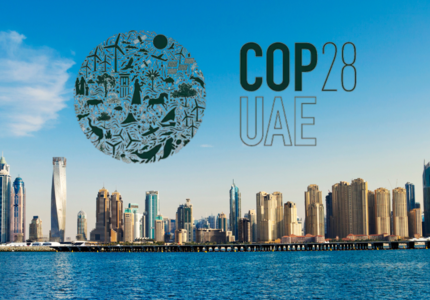The first Global Stocktake will culminate at COP28 after two years of technical and political processes. It is a critical milestone to reach the objectives of the Paris Agreement. It is a chance for countries to take stock of progress and remaining gaps in climate action and to pave the way for an increase of their climate ambition. It is also a critical opportunity to enhance international cooperation among countries and, more broadly, among the diversity of actors who need to coordinate their actions. The high-level priorities retained from this extensive collective process at COP28 will critically define the direction that international discussions will take in the coming two years, in the lead-up to the revision of Nationally Determined Contributions in 2025. Based on a detailed analysis of the technical outcome of the GST and on the work of the DDP network, we argue that the GST outcome and related decision at COP28 should recognise the need for systems’ change and the necessity of innovation and creativity in international cooperation to support them.
This year’s COP28 is focused on the Global Stocktake (GST), a mechanism of the Paris Agreement that reviews and assesses climate commitments to ensure that we are on course to reaching its objectives. The GST is not just looking back at what the world has done so far. Its goal is not to name and shame. It is meant to be a “global accelerator”–directing governments, cities, businesses, and advocates to take transformative action to slash global emissions, boost climate finance and increase resilience. It is a chance for countries to engage in the spirit of solidarity and mutual support for both ambitious climate action and strengthened international cooperation. The GST is a critical juncture that will determine the momentum of climate action in the next decade.
Diagnosis of the GST process
The GST has helped bring to the political realm evidence which has been widely acknowledged in scientific assessments. It has served as an accountability tool, serving to establish a shared diagnosis on where we are. But the GST has not been just this backward-looking instrument. It has also served to provide guidance to nations on how best to step up their efforts and speed up transition while leaving no one behind. As such, it has gathered useful elements towards climate solutions, sector by sector.
A critical message that emerges from this process is the recognition that the climate problem cannot be addressed by a simple juxtaposition of solutions emerging from a mitigation-focused, siloed approach or by a straightforward adoption of technological solutions guided only by cost-effectiveness. Instead, transformations of systems are needed, i.e. a combination of technological and organisational changes that structurally affect the functioning of the economy. These transformations must happen inside all sectors and across them, and in all countries.
But the process has also suffered from number of limitations.
First, we have seen a very limited number of submissions to the process made by countries, and especially from developing country Parties, which could be due to limited time, capacity, or prioritisation of the issue. This will mean a lower understanding of the in-country barriers to implement the transformations needed and a limited accounting of the specific challenges they face.
Second, the division in thematic areas “mitigation, adaptation and means of implementation” might make it more difficult to identify actionable solutions. In most cases, unlocking the barriers to in-country action would indeed require a holistic approach, that mobilizes all the available tools.
Finally, international cooperation, despite being a central part of the GST mandate and the Paris Agreement, and widely recognised as a critical enabler has been less addressed in the submissions and discussions. This can still change at COP28 in the preparation of the decision.
Towards an innovative approach to international cooperation
The good news is that COP28 can still address these limitations of the process by giving a high-level political recognition to fundamental characteristics that the process should follow. In particular, the GST outcome could promote a needs-based, sector-driven, solutions-oriented and forward-looking approach to international cooperation.
“Needs-based” cooperation would ensure solutions are designed to address the priority requirements of countries, taking into account the specificities of different national circumstances. It also recognises the need to prioritise cooperation solutions that provide local benefits, effectively supporting the development of economic activities in the country and responding to the needs of the local populations.
“Sector-driven” recognises the need for sectoral entry points, in order to adjust the solutions and design them to answer and respond to the specific challenges and opportunities pertaining to the transformation of each sectoral system.
”Solutions-oriented” stresses the need to organise international cooperation around concrete decisions that can practically enable systemic transformations.
Finally, “forward-looking” highlights the necessity to design cooperative solutions consistently with a clear perspective on the changes that must happen at different time horizons to trigger systemic changes within and across each sectoral system.
Illustrative examples of the benefits of the innovative approach
For example, in climate finance, collaboration between national and international actors is needed to overcome financial barriers. At the domestic level, countries need to have clear and stable policies and strategies to inspire confidence among investors. At the international level, financial actors must develop mechanisms to finance transformations that currently cannot find support under the existing structures.
DDP research in large emerging countries shows that the quality of finance–cost, accessibility, and duration of financial cooperation and credits–is crucial to transform their economies. It also shows that international financial support does not necessarily flows where it is most crucially needed. For example, transformations that rely on small actors like farmers and SMEs have limited financial capacity and the actors are seen as having low creditworthiness. Another example are necessary technologies for transforming the different sectors in the long term, some of them being still in the early stages of maturity and can be seen as risky, although there is a need to invest in them without delay to ensure their timely availability in the transition at an affordable cost.
Another example of innovative international cooperation is the emerging Just Energy Transition Partnerships (JETP). They establish an agreement between a group of donors providing financial resources and a developing country committing to concrete and measurable objectives in its low-carbon transition. The first such deal was announced at COP26 with South Africa and, since then, similar deals were signed with Indonesia, Vietnam and Senegal. These JETPs mark a noteworthy step in the direction of financial deals designed to address the needs of the countries. But lessons learnt from these first examples have also pointed to needed improvements about their content, design process, governance and concrete implementation to make them an effective support to country transitions. It is also important to acknowledge that such bilateral deals, even if replicated and improved in their design, should be considered as part of a broader innovative package for climate finance, together notably with multilateral approaches.
In adaptation also, a bottom-up approach is needed, as countries have pointed out that it will allow communities to feed local and Indigenous knowledge, vulnerability information, needs, and capacity gaps to the national level so that national-level policies and plans truly reflect local needs and priorities and help develop the capacity of actors at all levels.
The GST decision at COP28, a key turning point for the Paris Agreement
The UNFCCC is not the place where all the processes operationalising the innovative approach to international cooperation would develop, but the it still has a key role to play to initiate and organise this innovative approach to international cooperation. Notably, the UNFCCC can give the political signal that triggers the processes and gives the sense of direction, build bridges with the diverse initiatives and processes where in-depth conversations can happen, and can help organise collective accountability and continuity in the context of new or existing UNFCCC processes.
Whether or not the Global Stocktake at COP28 produces politically relevant outcomes along these lines will be a key test for whether countries will abide by the Paris Agreement. Success involves countries scaling up their climate action and support, putting forward more ambitious national climate plans in 2025 and adopting new commitments at COP28 that accelerate key actions over the next decade. Additionally, COP28 should establish clear processes to ensure continuity of the type of discussion that we have seen under the GST.








